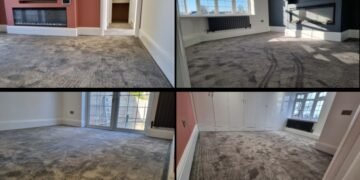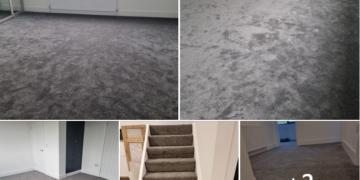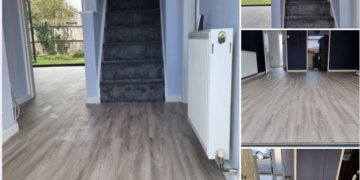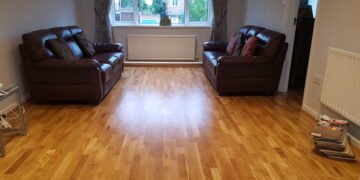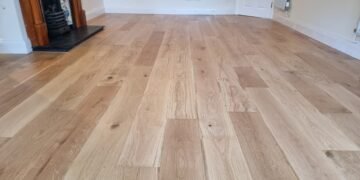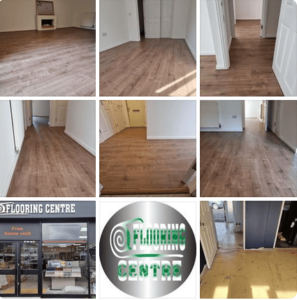Laying Luxury Vinyl Tile (LVT) on the ground floor and carpet on stairs and the hallway is a practical and stylish combination commonly seen in homes. Let’s break down both materials and the reasoning behind using them in these specific areas:
1. LVT Flooring on the Ground Floor:
- Durability: LVT is known for being highly durable, water-resistant, and scratch-resistant. This makes it an excellent choice for high-traffic areas such as the living room, kitchen, or other ground floor spaces, where floors are subject to frequent footfall, spills, and furniture movement.
- Aesthetic Variety: LVT comes in various styles, including wood, stone, and tile effects, offering homeowners the flexibility to choose a design that complements the overall look of the space. It can mimic the warmth of hardwood or the coolness of tiles, giving a luxurious feel without the high cost.
- Comfort and Insulation: While LVT is a hard surface, it is more comfortable underfoot compared to ceramic tiles or natural stone. It can also be installed with underlay for better soundproofing and insulation, reducing noise from foot traffic and making it feel warmer, which is a plus for homes with young children or pets.
- Maintenance: The ease of cleaning and maintaining LVT is one of its major advantages. It can be swept and mopped easily, and is resistant to stains, making it an ideal flooring choice for areas like dining rooms or hallways where messes are likely.
2. Carpet on Stairs and Hallway:
- Comfort and Safety: Carpet is a popular choice for stairs and hallways because of its softer feel underfoot and added grip. Stairs can be hazardous with hard surfaces like LVT, especially for children or the elderly, as slips are more likely. Carpet adds a layer of safety by providing better traction, reducing the risk of accidents.
- Warmth and Insulation: Hallways and staircases can often feel cold or echoing in homes with hard flooring. Carpet helps provide warmth, both physically and acoustically. It absorbs sound, making it a quieter option, which is especially useful in multi-story homes where noise from upstairs or downstairs can travel through the house.
- Design and Texture: Carpet can add a different texture and visual interest to the hallway and stairs, contrasting with the sleekness of LVT on the ground floor. Depending on the color and style, it can create a cozy atmosphere. It also works well in homes that prefer a mix of traditional and modern styles.
- Comfort Underfoot: Since people often walk barefoot or with soft shoes on stairs and hallways, carpet provides a more comfortable walking experience compared to harder flooring options. This can be especially appreciated in cooler seasons or climates.
Why This Combination Works:
- Practicality: LVT on the ground floor is resilient against the wear and tear of everyday life, while carpet on the stairs and hallway offers comfort and safety. The ground floor is usually the busiest, and LVT’s durability is suited for areas with heavy use, while carpet’s softness works well in smaller spaces that are also heavily trafficked but require more comfort.
- Visual Transition: The combination of LVT and carpet can help create a visual break between different areas of the house. Using LVT for the main living areas and carpet for the transitional spaces (like stairs and hallways) creates a natural flow while serving functional purposes.
- Cost-Effective: While both materials are affordable compared to natural hardwood or tiles, this combination can help manage costs more effectively. LVT’s installation and maintenance costs are typically lower than those of hardwood or tiles, and carpets for stairs and hallways are often less expensive than covering those areas with hard flooring.
This mix of materials balances aesthetics, functionality, and comfort, providing a modern and practical flooring solution for your home.

